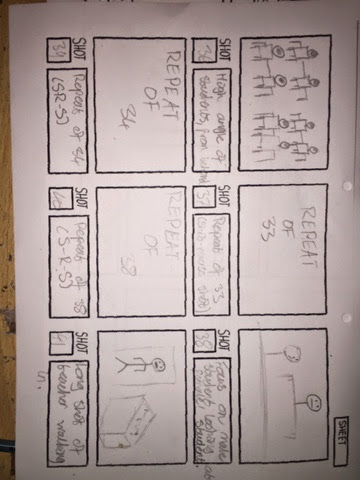Micro Conventions Analysis
High School Dramas
Clueless (1995)
Camera Work
High angle tracking, Tracking character, Canted angle, Medium shot of character, Crane shot, Tilt shot movement, Zoom in shot, Close up, Point of view shot
Editing
Production company at the beginning, Animation of titles, Sound bridge, Fade transition (blur), Cross cut, Eyeline match, Slow motion (Flashback)
Mise-en-Scene
Outdoors (road), Car, Formal clothing "grown up", Shopping bags, Poised body language, Happy, Set by swimming pool, swimming costumes, Pink (reflects main character)
Sound
Soundtrack "Kids of America", Non-diegetic, synchronous sound - matching animation movement, characters screaming, foley sound (splashing), Dialogue, Foley (Car driving by), Voiceover, synchronous (computer), Motif song "Fashion"
Mean Girls (2004)
Camera Work
Two shot, Point of view shot, Close up, Over the shoulder shot, Depth of field, Two shot of relationship, Point of view shot with eyeliner match, Establishing shot, Tracking movement, Point of view shot again, Over the shoulder shot again, Medium shot
Editing
Titles fading on and off, Music in background, transition (fade on), Shot reverse shot, Sound bridge, Editing for perspective, Eyeline match, Screen flash, Ellipsis (Journey to school), Perspective, Slow motion, Ellipsis (getting to class)
Mise-en-Scene
Set outside home, Parents looking down, Lunch bag, Casual clothing, Bright lighting, "Nerd" look to character, Typical country looking children, Safari outfits, Natural colours, Animals: safari setting scene, Football, Sports baseball jacket, school setting
Sound
Production company sound, Building up "African" soundtrack, Dialogue, Foley (Camera shot), Change in soundtrack, Non-diegetic sound, Voiceover, Sound bridge, Accent, Synchronous Foley (Bus driving by), School bell (Foley), Dialogue
Youth Dramas
Kidulthood (2006)
Camera Work
Worms eye view, Two shot, Medium shot, Tracking of character, Panning of setting, Pull focus to character, Tilt, Close up on character, Two shot (relationship between characters), Establishing shot
Editing
Fading of titles, Sound bridge, Slow motion, Cross cut to other scene, Edit for perspective, Cross cut when "Claire" and "Sam" mentioned - cut to characters
Mise-en-Scene
Football prop, School setting, School uniform, Drill & Glasses - safety of school DT drill, Scared body language of two female characters, Trends "Just Do It" branding, Three characters not in uniform - Dominance
Sound
Soundtrack, Background noise of school, Kicking of the football, Setting up of the drill, Dialogue, Gaming sounds from character's console (foley), Shouting of characters, Drill sounds, Dialogue about party
The Perks of Being a Wallflower (2012)
Camera
Tracking, Establishing shot, Pull focus, Zoom out (establishing shot), Medium shot of character, Close up of character, Two shot showing relationship between characters, Depth of field, Point of view shot
Editing
Titles fading on, Fade on transition, Ellipsis, Eyeline match, Editing for perspective, Ellipsis to location, Cross Cut
Mise-en-Scene
Soft but dim lighting, Bedroom setting, School setting, Simple but dark clothing, Hiding body language, Baseball Jacket (School), Awkward wave, Lonely, Book in characters hands
Sound
Production company sound, Typewriter sound effect & new line of typewriter, Soundtrack, Voiceover narration, School bell, Dialogue between characters


























